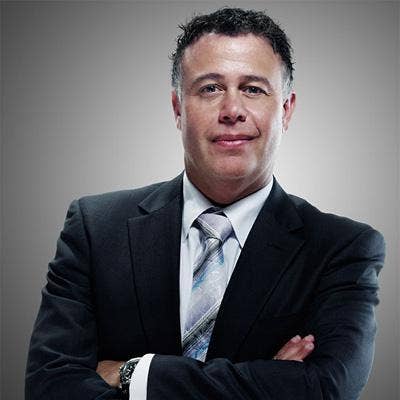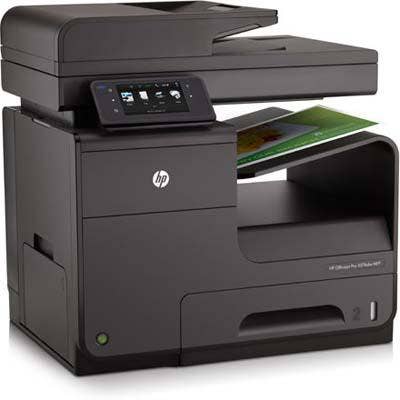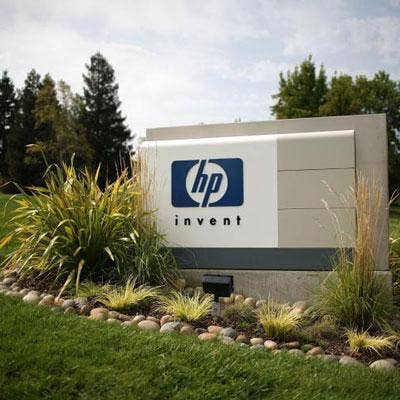Exclusive: 15 Big Changes Made By HP's Top PC And Printing Exec

Breaking New Ground: Wave 3, Creating New Categories And Phablets
HP Executive Vice President Printing and Personal Systems Dion Weisler is upping HP's innovation quotient with a stepped-up focus on developing completely new categories in printing and personal systems. Weisler has architected a product development strategy to capitalize on the "three waves of innovation:" Wave 1 for where the market is today, including phablets; Wave 2 for hot-but-still-developing areas (think 3-D printing and wearables); and Wave 3 for categories that don't even exist today. Here are 15 major moves made by Weisler to up HP's PC, mobile and printing game.

Focusing On Wave 3 Innovation
"Wave 3 [innovation] is all about creation. It is about creating an entirely new category that no one is even talking about today. It is about looking at bits of technology and piecing them together and gluing them together and making something entirely new and exciting.
You will know Wave 3 when we do it. Trust me. You'll say -- 'Wow that is different! That is a new category!' We have got some fairly exciting things sitting in the funnel. Obviously I don't want to talk about things specifically and give our competitors a lot of heads up about what we are doing. But we are working on both the personal systems side of the business and on the print side of the business -- to continue to innovate across the three waves."

Focusing On Wave 2 Innovation
"The second wave [of innovation] is looking through the minefield of things that are sort of hot. They have not yet fully developed -- things like 3-D printing, things like wearables, and the Internet of things -- lots of hype and buzz and not necessarily very developed or large markets today. But they might be the wave that the next surfers want to paddle out to get on. So having a point of view on where we would invest in a very disciplined wave in that second wave was something that we had to do [and have done] across our personal systems business."

Skating To Where The Puck Is Going
"We have tried as best we can -- and if you had a crystal ball you wouldn't be doing this, you'd be doing something else -- to anticipate where the heat in the market is going to be -- not where the heat in the market is today. And then having all of the smart folks [at HP] that are out building products ensuring that by the time we deliver them, we are skating to the puck so that by the time we get there, we hit the puck and intersect the market at the right time.That is a new muscle that we had not been exercising for some time.
And I think it makes a big and visible difference to our channel partners because you quickly identify the things you should stop doing and you clearly can see the things that you need to double down on."

Focusing On Wave 1 Innovation
"Wave 1 is all about capitalizing on where the market is today. And I think in upward markets where the markets are growing and there is a lot of hype and everyone loves you categories -- the way you win is you run faster than the competition and you do it better. And I think we had built that muscle and we are really good at doing that. I think we have the best supply chain on the planet. We are always looking at new and innovative ways to make that supply chain more efficient. We had reasonable costs.
I have each of my GBUs [Global Business Units] looking at how they play across all three waves: capitalizing on the existing wave [1] that everyone is on, anticipating what is likely around the corner [wave 2] and then how to create something new [wave 3]."

Betting On Phablets
"We announced our first Phablet or VoiceTab [Quad Processor based HP 6-inch diagonal Slate6 and 7-inch diagonal Slate7 tablets featuring voice calling capability] in India. Why did we do that? We have an unbelievable channel in India. We have this network called HP's World Stores -- franchises that are all across India.
We actually designed and built this product in Asia for India. So it was a product very much driven for the market. We built it for a price point that is about $199 for a 6-inch device that is quad-core, dual-thin. The dual-thin is an interesting approach that not necessarily many are doing for the mainstream, but it is really fit for the market in India. Partners are loving it. The channel is loving it. You'll see us do more of that stuff."

Investing In R&D To Create New Categories
"The ability to create new things is limited by two things: One is imagination, and two is money. And I don't think Hewlett-Packard is short on either. So without going into specifics on R&D budgets, I think what we would say is while we have been looking to get our costs more in line with our revenue, we have done that without jeopardizing or touching our [Printing and Personal Systems] R&D budget. So that is one area where we've had a hands-off [philosophy]. This is a business that moves at lightning speed, and you have got to ensure your costs are in line with your revenue. That is the fiduciary responsible thing to do. But to take it away from R&D is to cut your leg off."

Taking Advantage Of HP Labs/HP's Patent Portfolio
"We have some of the most imaginative minds on the planet. The main [HP Labs] office is in the [Silicon Valley] Bay area, and 50 percent of the world's innovation almost comes out of a 25-mile radius of where we are. So we have access to an ecosystem that is very powerful. Underpinning all of that is about 14,000 patents that we have and thinking about how we use that and work with HP Labs, which is an entire arm of Hewlett-Packard devoted to creating technologies. They don't create products. They create technologies.
We piece these technologies together so if someone has a great idea and says, 'Take this from [HP] Labs,' we take this from over here, we develop this ourselves. And if we stitch those things together, look at what we can create. That is pretty exciting. We are focused on doing that."

Embracing A Multi-OS, Multi-Architecture Model
"We are going to operate across multiple OSes, multiple form factors and multi-architectures. In the old world, if you ran to the Wintel [Microsoft Windows and Intel x86] playbook and you did it faster than everybody else, you would get ahead. It is a brave, new world. There are lots of other exciting plays -- and I am not dismissing by any means Microsoft or Intel; they are great partners of ours, and we think with their solutions we can build for some parts of the market and we'll continue to do that.
But there are other choices now that enable us to do new things with form factors as you get into ARM-based technology that has less heat. So we have gone from one playbook with one operating system to now offering four operating systems, and that is in the space of one year."

Raising The Bar For The Technology Pole Vault
"You can fool yourself into thinking you are better than you really are. So my mantra to the team now is: As soon as you reach one height on the pole vault, raise it and go for your next jump. Because if you don't, the competition will.
That is really how we have everybody thinking today: The competition doesn't sleep. We have got to keep improving and keep making it better.
I think markets always yearn for something different, something new, something exciting, and if we can continue to innovate and drive value to them, ensure that our partners understand exactly where we are going, and that we do the right planning with them, then they are always interested in differentiation."

Betting On Hybrids, Phablet And Ink In The Office
"Hybrids [such as the new HP Phablets Phablets/VoiceTab HP 6-inch diagonal Slate6 and 7-inch diagonal Slate7 tablets featuring voice-calling capability] will definitely have a place in the market. We are seeing that market growing at 65 percent and expect it to grow at 65 percent through 2016.
We were confident that we would create new markets with Ink in the Office and bringing Ink through Officejet Pro X with pagewide array [delivering twice the speed and half the printing cost of color lasers] on top of the already [successful] Officejet Pro Series that we were already doing."

Focusing Externally, Not Internally
"We did a lot of moving away from the water fountain -- lots of people were focused internally -- and we turned our attention out to the markets: understanding our customers extremely well, understanding our competitors better than they understand themselves, and ensuring that everything we did was going to hunt in the market.
We have now built a very common discipline across our organization, which starts with the customer segments and the market segments. We do very detailed market segmentation with a common model that we use in our GBUs [Global Business Units].
So the areas where we needed to double down, that is exactly what we did. We pulled resources off of things that weren't important. We went to work on costs. We went to work on simplifying our product portfolio and making sure it was competitive in the market."